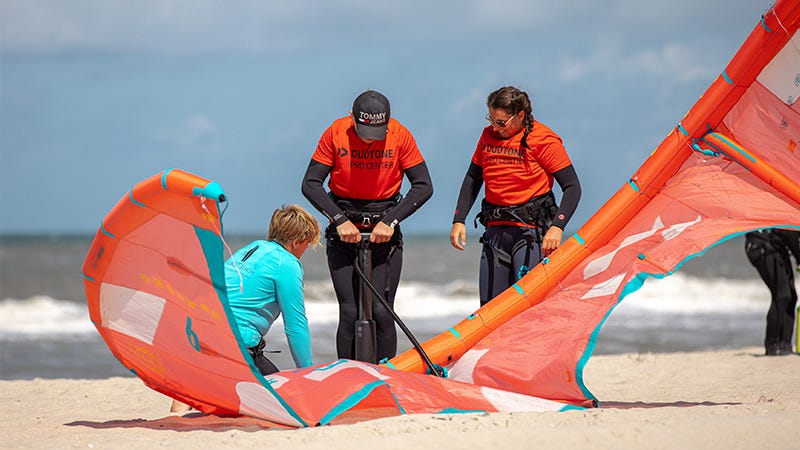Here are 10 tips to prepare you for your first kite course. This article is intended for those who have no prior experience with watersports. Enjoy!
1. How to put on your wetsuit
Most watersport centers offer wetsuit rentals, typically included in your kitesurfing course fee. These wetsuits usually have a back zipper, so make sure the zipper is on your back, not your belly. This placement minimizes water entry and ensures you’re wearing it correctly.
2. Don’t put on a rented wetsuit naked
While some people don’t wear anything under their own wetsuit, you should always wear swimwear under a rented wetsuit. This maintains hygiene since many people have worn it before and will wear it after you.
3. Pee beforehand
Being in the water can increase the urge to pee. Try to use the bathroom before your session to maintain hygiene, considering the shared nature of rental wetsuits.
4. Use sunscreen
Water amplifies the sun’s UV rays by around 90%, so it’s easy to get sunburned. Apply sunscreen to your face and any other exposed skin to protect yourself from harmful UV rays.
5. Choose the right wetsuit thickness/length
The type of wetsuit you need depends on the water and air temperature. In warm places like the Caribbean, a rash guard may suffice (to prevent sunburn). In colder areas like the Baltic Sea, a wetsuit with long sleeves and a thickness of 4-5 mm is usually necessary to stay warm. Choosing the right wetsuit prevents both hypothermia and overheating.
6. Don’t rush into the water
Your first lessons will likely be on land. This is crucial to mastering steering, the foundation of kitesurfing. Trust your instructor and focus on these basics before hitting the water.
7. Practice Body Dragging
Before you start surfing, you’ll practice body dragging, which involves moving through the water without a board. This skill is essential for safety, especially in situations where you might lose your board. It’s a fun exercise and key to your progress.
8. Learn the 3 stages of your Safety System
Kitesurfing can be dangerous, but modern safety systems make it much safer. Familiarize yourself with your kite’s safety system so you can respond correctly in difficult situations.
9. Learn the rules for right of way
Understanding the rules for right of way is important to avoid conflicts and accidents with other kiters. Learning these rules helps ensure everyone’s safety on the water.
10. Keep your expectations realistic
You might not master water starts by the end of your beginner course. Learning kitesurfing takes time, dedication, and good wind conditions. Stay patient and persistent.
By following these tips, you’ll be better prepared for your kitesurfing lessons and ready to enjoy this exciting sport safely :)








